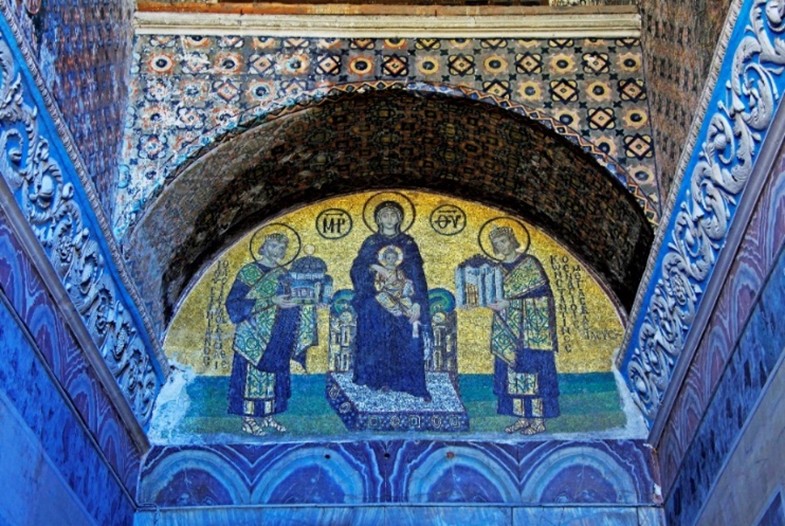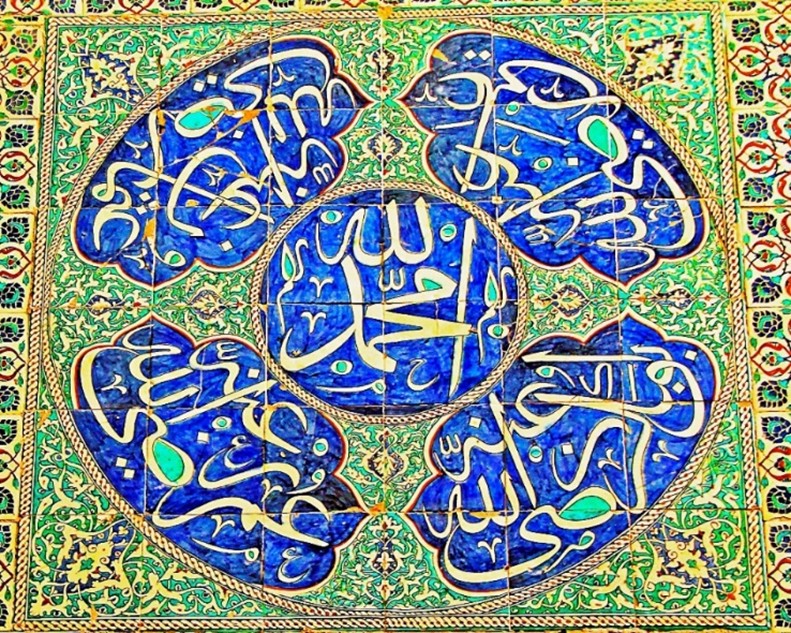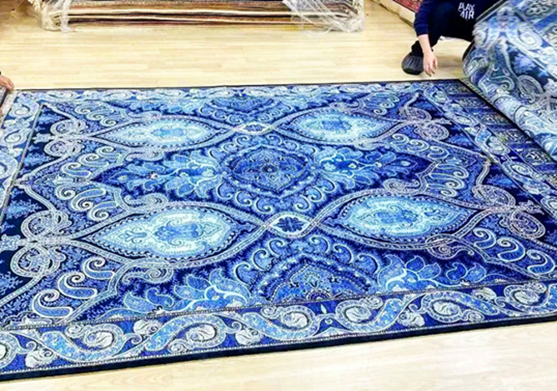Khang-Loon Ho
October in Istanbul,
Blue like Turkish blue.
The vast sky of Anatolia,
Blue like Turkish blue.
The shimmering ripples of the Bosporus,
Blue like Turkish blue.
The floral porcelain walls of Topkapi Palace,
Blue like Turkish blue.
The domes and columns of Hagia Sophia,
Blue like Turkish blue.
The carpet patterns in the Grand Bazaar,
Blue like Turkish blue.
Surpassing hues and the spectrum itself,
Turkish blue is,
The blue of weathered years,
The blue of simplicity restored,
The blue of contemplative thought,
The blue of soaring on the wind,
The blue of settled dust,
The blue of beginnings and endings.
It is an impression and an imagination,
Turkish blue is,
A sense of antiquity,
A sense of splendor,
A perspective,
A state of mind,
A prayer,
A tranquility,
A mystery.
October in Istanbul,
Blue like Turkish blue,
Blue that
reaches the chilling heights.
** Istanbul has been a human settlement for approximately three thousand years. In the 7th century BC, the Greeks established a colony here. In 196 BC, it was conquered by the Roman Republic and named Byzantium. In 330 AD, it was renamed Constantinople and became the capital of the Eastern Roman Empire until 1453 when it was invaded by the Ottomans and Constantinople fell. Thereafter, it became the capital of the Ottoman Empire. In the 16th century, the city’s population was around 700,000, making it one of the most populous cities in the world. When the Republic of Turkey was founded in 1923, the capital was moved from Constantinople to Ankara (formerly known as Angora). In 1930, “Istanbul” became the only official name of the city in Turkish, replacing the traditional name Constantinople.
** Turquoise is a color that lies between green and blue, originating from the gemstone turquoise. This stone was first introduced to Europe by Turkey, hence the name “Turquoise.” This color, akin to the deep blue sky of Turkey, is serene and mysterious, like a beautiful poem, distant and moving.
Turkey is a country with a rich history and culture, having experienced wars and turmoil for many years, which has given people the impression of red or green. However, when you enter this country, you will find that Turkey is indeed a country dominated by blue and white. Whether it’s the blue sky and sea or the famous Blue Mosque, one can feel the beauty of the seamless blend of sky and sea here.
Turquoise not only represents a color but also the spirit of the Turkish people. This color is omnipresent in Turkish art, architecture, and daily life, symbolizing peace, purity, and eternal beauty. Whether on Ottoman carpets or in modern art, turquoise always plays an important role.
Turquoise is a miracle derived from nature, a history spanning thousands of years, and a deep-rooted cultural symbol. This color tells the story of this country through Turkey’s landscapes, architecture, and people’s lives. Nowadays, the application of turquoise in modern art brings new vitality to this traditional color, becoming an endless source of inspiration for artists.
** Anatolia, also known as Asia Minor, is a peninsula located at the western end of Asia. It is bordered by the Black Sea to the north, the Mediterranean Sea to the south, and the Aegean Sea to the west. Its eastern boundary is usually defined by the Taurus Mountains. This region roughly corresponds to the Asian part of modern Turkey.
Due to its location at the crossroads of Asia and Europe, Anatolia has historically been a key region for migrations and conquests. Throughout history, it has been invaded and occupied by Arabs, Turks, Crusaders, Mongols, and the Turko-Mongol armies of Tamerlane. Eventually, the Ottoman Empire fully controlled this region in the 15th century. Since 1923, the history of Anatolia has been inextricably linked with the history of modern Turkey.
The Bosporus or Bosphorus Strait, also known as the Istanbul Strait, is a strait between Europe and Asia. It is about 30 kilometers long, with a width of about 3,700 meters at its widest point and about 700 meters at its narrowest point. The Bosporus Strait connects the Black Sea to the north and the Sea of Marmara to the south. Istanbul, Turkey’s largest city, is located on either side of the Bosporus Strait, facing the Anatolian Peninsula. It is the primary exit point to the sea for countries along the Black Sea and the only waterway connecting the Black Sea to the Mediterranean. Therefore, the Russian Black Sea Fleet must pass through the Bosporus Strait to reach the Mediterranean.
Hagia Sophia, officially the Hagia Sophia Grand Mosque (Grand Mosque or Blue Mosque 蓝色清真寺), is a mosque and former church in Istanbul, serving as a significant cultural and historical site. It is the last of three churches built consecutively by the Eastern Roman Empire on this site, constructed in 537 AD. From 360 AD to 1453 AD, it primarily served as an Eastern Orthodox Church but was temporarily used as a Latin Catholic Church between the Fourth Crusade and 1261. After the Ottoman Empire conquered Constantinople in 1453, Sultan Mehmed II converted Hagia Sophia into a mosque, adding Islamic architectural elements such as minarets, mihrab (prayer niche), and mimbar (pulpit). In 1935, it was turned into a museum, symbolizing cultural and religious harmony. In 2020, the Turkish government decreed that Hagia Sophia be converted back into a mosque. It remains open to visitors, serving both as a place of worship and a historical site, attracting millions of visitors each year. This iconic building showcases the essence of Byzantine architecture and has had a profound impact on religious and architectural traditions worldwide. Its unique history as a church, mosque, and museum reflects the cultural and political changes in the region.
Mosaics of Hagia Sophia Church. This mosaic, located in the vestibule of the southwest gate, dates back to 944 AD and was discovered during restoration work in 1849. The mosaic depicts the Virgin Mary seated on a throne without a backrest, with her feet placed on a pedestal adorned with precious stones. The child Jesus is on her lap, holding a scroll in his left hand and giving a blessing. To the left of the Virgin Mary stands Emperor Constantine I, dressed in ceremonial robes, presenting a model of the city to her. The inscription beside him mentions: “Saint and great Emperor Constantine.”
Topkapi Palace. The blue tile patterns adorning the walls of the corridors. Topkapi Palace (Topkapı Sarayı, meaning “Gate of the Cannon” in Turkish) is a palace in Istanbul. From 1465 to 1853, it served as the residence and main administrative headquarters of the Ottoman sultans in the city. It was the site of state ceremonies and royal entertainment. After the Ottoman Empire’s dissolution in 1921, it was converted into a museum and is now a major tourist attraction. Topkapi Palace is a masterpiece of Ottoman architecture, housing a vast collection of ceramics, imperial clothing, weapons, shields, armor, Ottoman miniatures, Islamic calligraphy manuscripts, wall paintings, and Ottoman treasures. Topkapi Palace, along with other nearby historical sites, is part of the “Historic Areas of Istanbul,” which became a UNESCO World Heritage Site in 1985. The palace is described as “the exemplar of the Ottoman Empire period palaces.”
The Grand Bazaar. The Grand Bazaar (Grand Bazaar, 大巴扎) is one of Istanbul’s most important cultural heritage sites, with over 500 years of history. It is one of the oldest and largest bazaars in the world, featuring inns, cafes, and various shops. It is a living museum and one of the most vibrant and colorful places in Istanbul. This vast complex covers 45,000 square meters, with 61 covered streets and over 4,000 shops showcasing various crafts and products, including spices, ceramics, jewelry, silk fabrics, leather goods, and carpets. It attracts 250,000 to 400,000 visitors daily. In 2014, the Grand Bazaar was listed as the world’s most popular tourist destination, with 91.25 million visitors annually.







